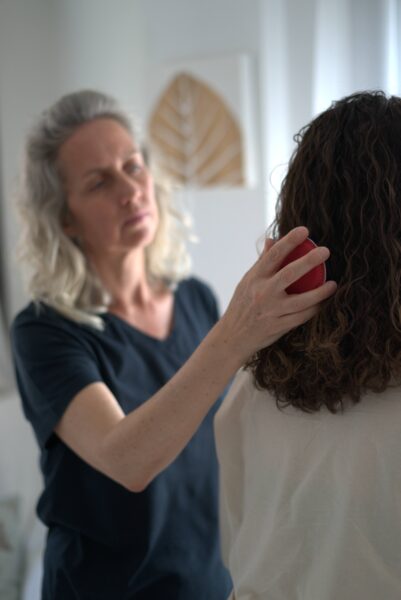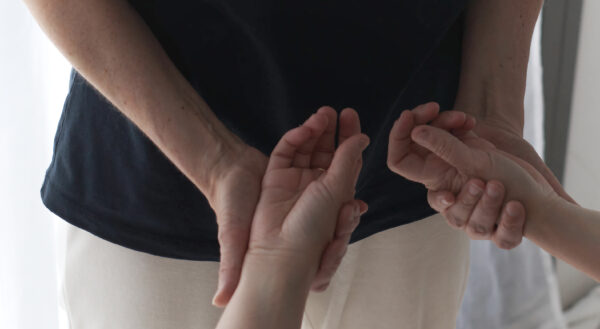
La descodificación emocional para liberar patrones
«Mucho de nuestro sufrimiento se debe a energías emocionales negativas que han quedado «atrapadas» dentro de nosotros.» La descodificación emocional por el Código de la Emoción es
La auriculoterapia es una práctica fascinante para mí! Es como leer el mapa físico y mental de la persona. La oreja no solo revela las molestias sufridas por su propietario si no también las causas o raíces de estos.
Un ejemplo impactante: Las señales de molestias que demostraba una cliente no tenía relación directa con su hígado y vesícula biliar, lo cual asumía al tener problemas crónicos con estos órganos. La exploración de sus orejas reveló la presencia de puntos sensibles asociados con el sistema digestivo: al finalizar la sesión se desencadenó una gastroenteritis.
La auriculoterapia desafía las ideas preconcebidas que a veces podemos tener sobre nuestras propias dolencias y revela sus orígenes, haciendo posible la recuperación.
Esta terapia alternativa se basa en la estimulación de puntos específicos en el pabellón auricular para tratar diversos trastornos y promover el bienestar. La estimulación de estos puntos se puede realizar de varias maneras, con el uso de pequeñas agujas (auriculopuntura), con la acupresión (presión de la mano), aplicando unas bolitas magnéticas o semillas o por microcorrientes (aparato estimulador), también por microsangrado o moxibustión (se calienta el punto con un bastoncillo de moxa, artemisa seca y triturada).
Existen dos escuelas en la práctica de la auriculoterapia: la escuela francesa del doctor Nogier, trabaja la estimulación de puntos reflejos interconectados con áreas del cuerpo por el sistema nervioso. Efectivamente, este intercambio de información se produce a través del sistema nervioso vegetativo, facilitando una respuesta nerviosa rápida y efectiva, debido a su proximidad al encéfalo.
La segunda escuela es la de la medicina china, basada en la conexión del pabellón auricular con el cuerpo por canales energéticos, conocidos como meridianos vinculados con órganos, sistemas y funciones específicos.
Ambos enfoques reconocen y usan la extensiva inervación de las orejas para tratar las alteraciones.
Esta terapia holística se usa para una amplia variedad de trastornos físicos y emocionales, incluyendo el dolor crónico, el estrés, la ansiedad, las adicciones, los problemas digestivos, del sueño, hormonales.
La regularidad de las sesiones, la elección de los puntos a tratar y del tipo de estimulación a aplicar se deciden en sesión, cada caso es personal y distinto por más que sufra las mismas manifestaciones.

«Mucho de nuestro sufrimiento se debe a energías emocionales negativas que han quedado «atrapadas» dentro de nosotros.» La descodificación emocional por el Código de la Emoción es

Cuales son los factores pudiendo influir en las respuestas a una terapia natural de una persona a otra? La efectividad y la rapidez de una

La kinesiología funciona a través de una prueba llamada AR significando Arm Reflex (Reflejo del Brazo) en inglés. Honestamente, aprender a realizarlo es un desafío, pero
Para cualquier pregunta, duda , puede rellenar el formulario o para reservar una sesión directamente hacer click en el siguiente botón.
Hablo español, inglés y francés
NOTA: Las terapias naturales no sanitarias que aplicamos NO SUSTITUYEN NI EXCLUYEN la atención o el TRATAMIENTO MEDICO O FARMACOLÓGICO CONVENCIONAL prescrito por profesionales sanitarios.
Copyright © 2024 Terapias naturales Anne Guillaume – Fotografías por sunday_morning.ph


La maderoterapia reafirma la piel, reduce celulitis y mejora la circulación, mientras que el drenaje linfático manual elimina toxinas y disminuye la retención de líquidos. Combinarlas en una misma sesión potencia sus efectos, ayudando a esculpir el cuerpo y mejorar el bienestar.